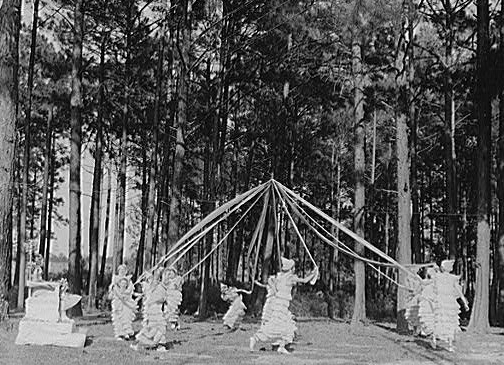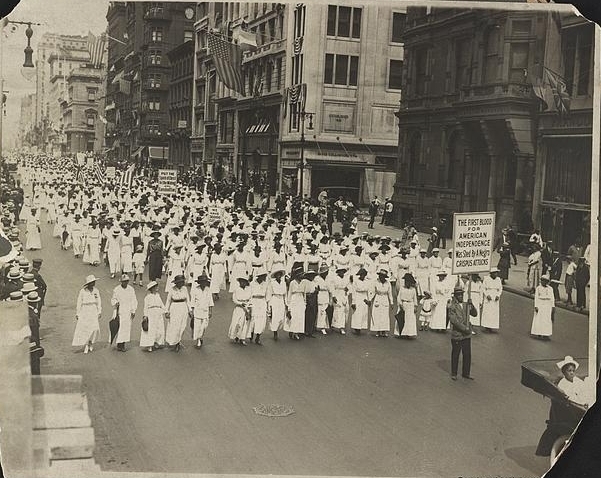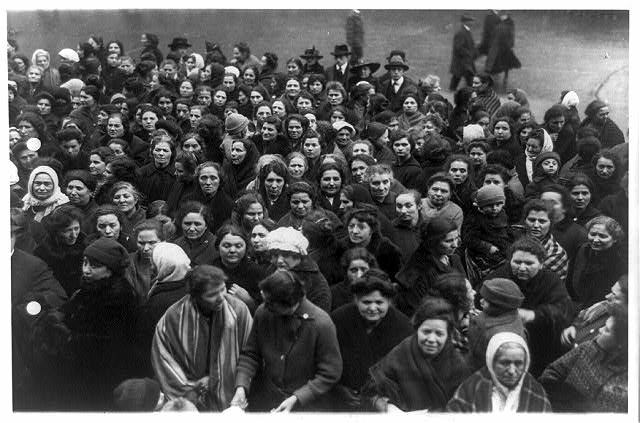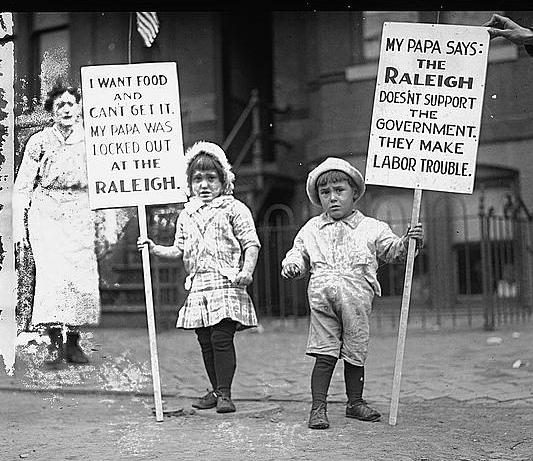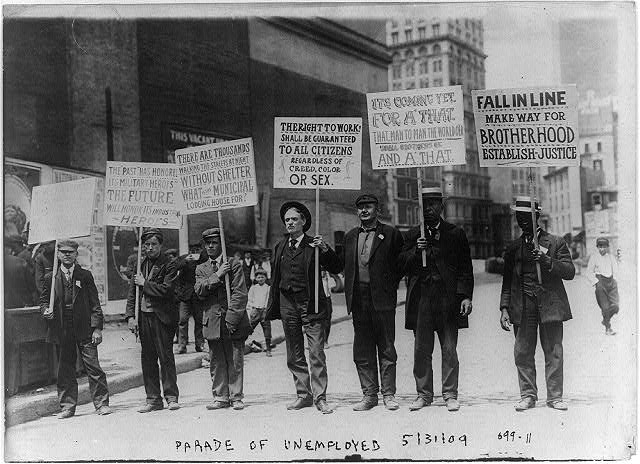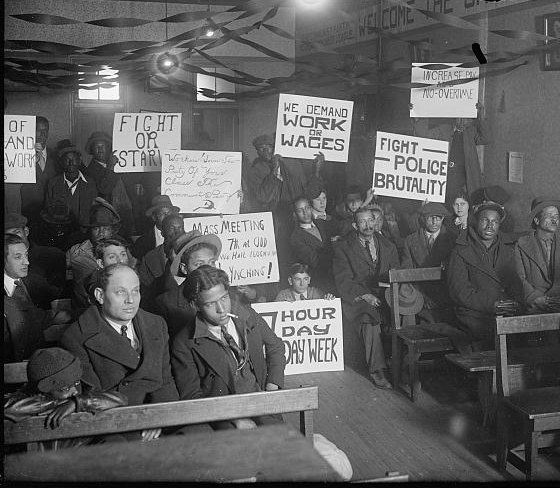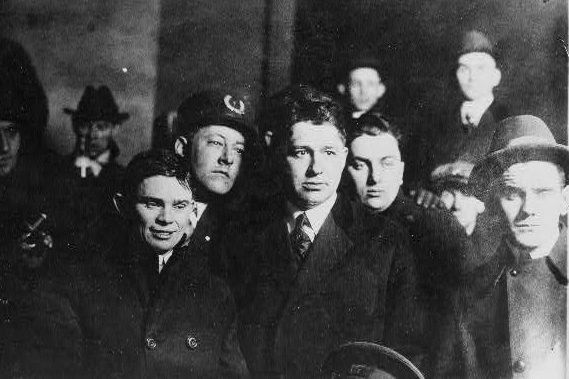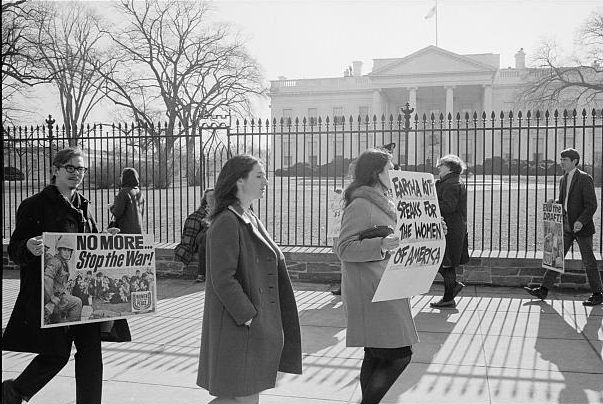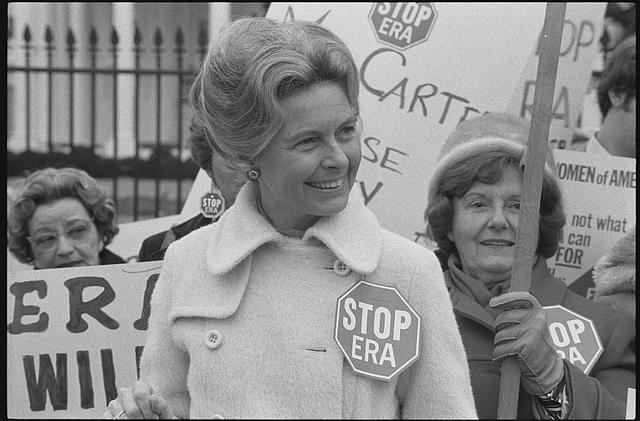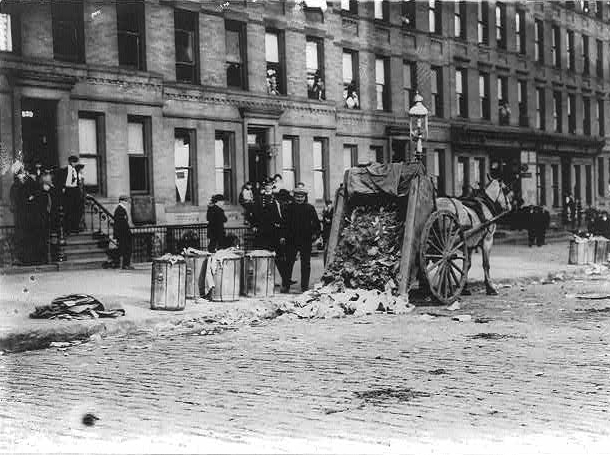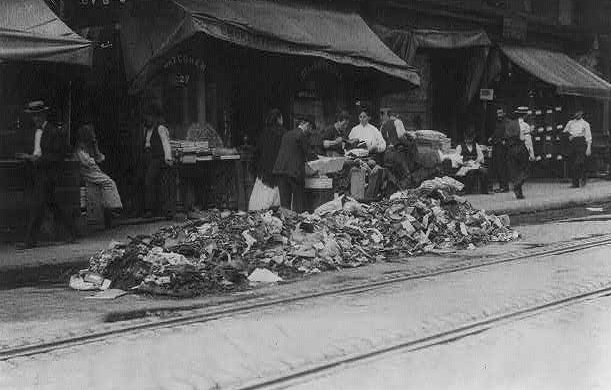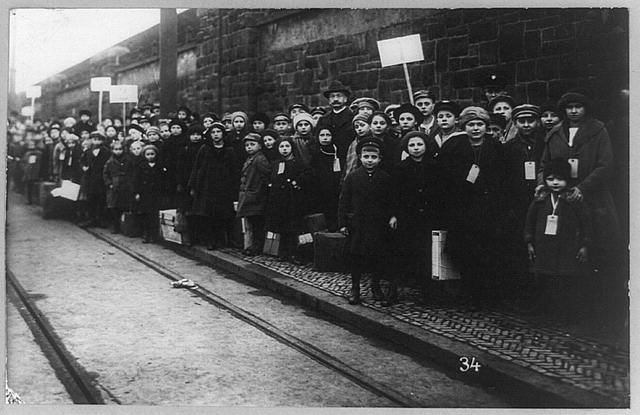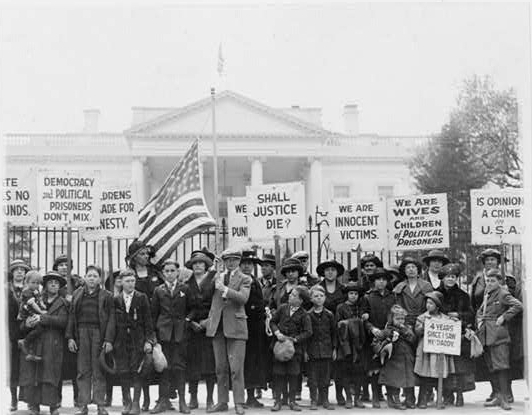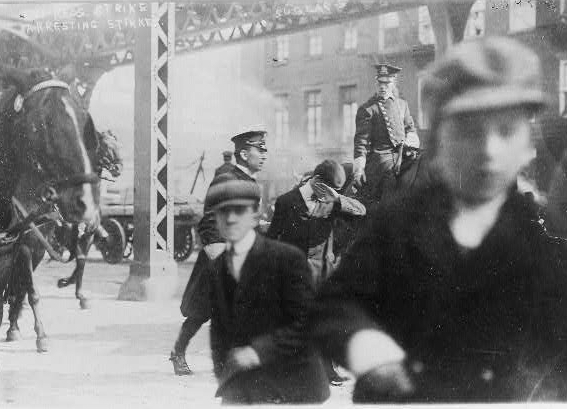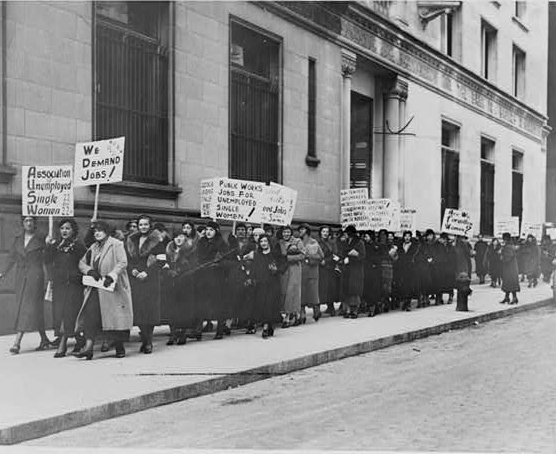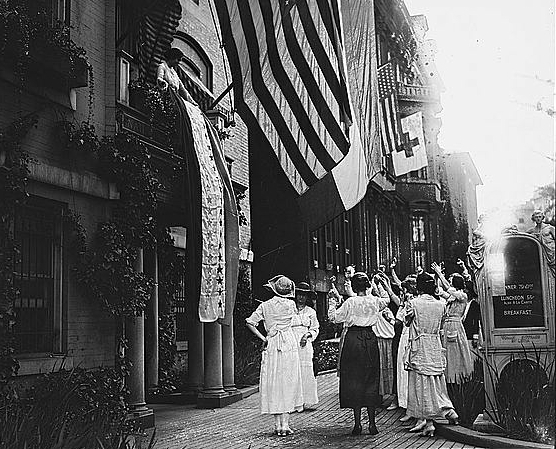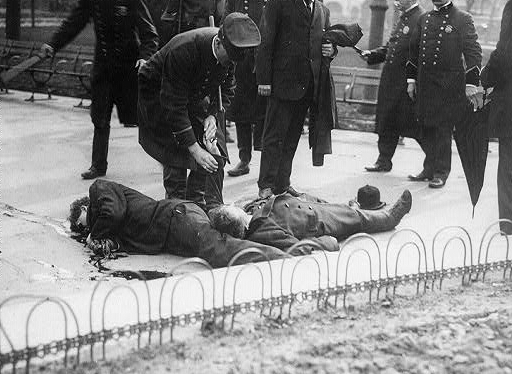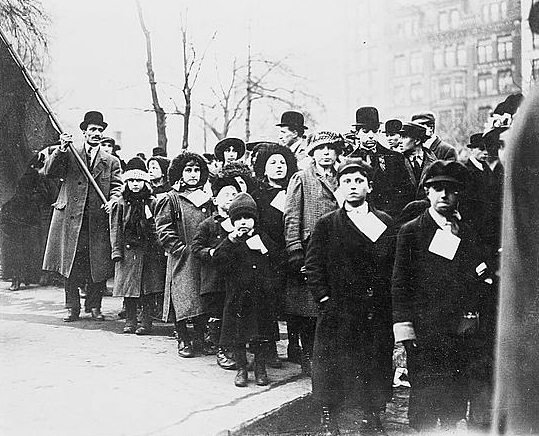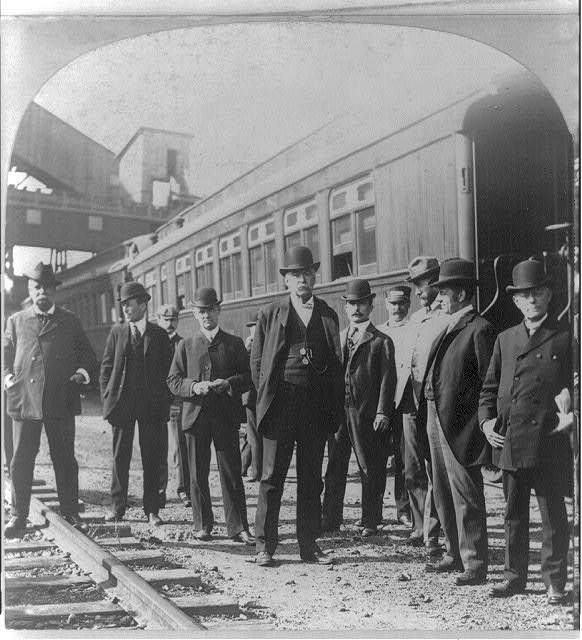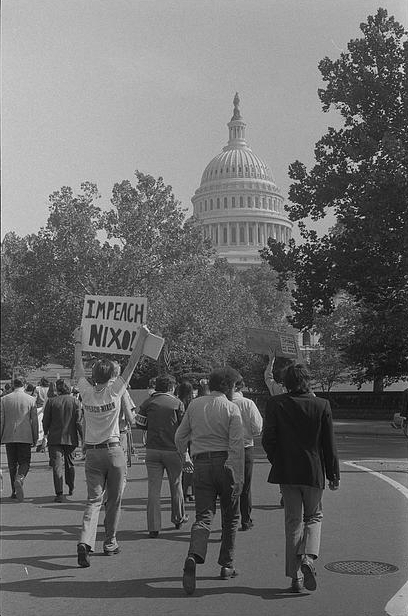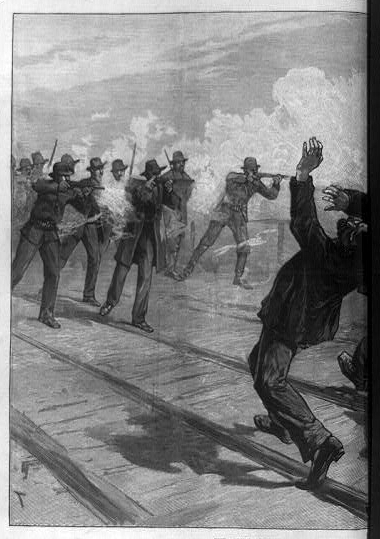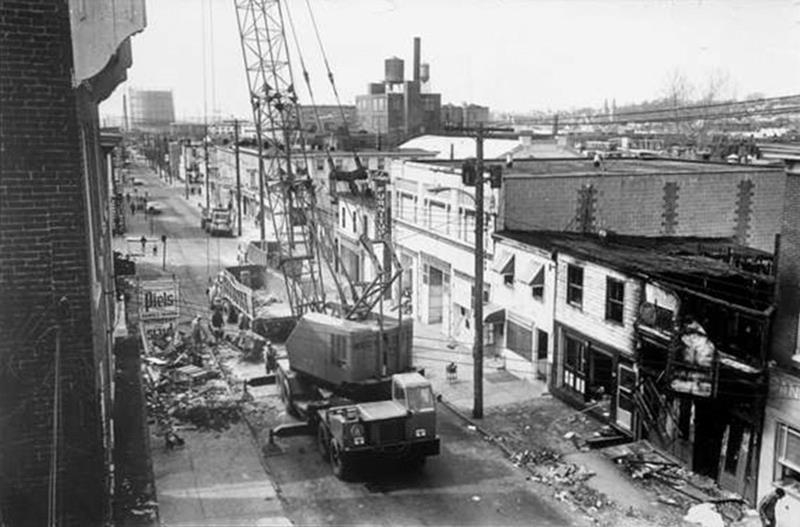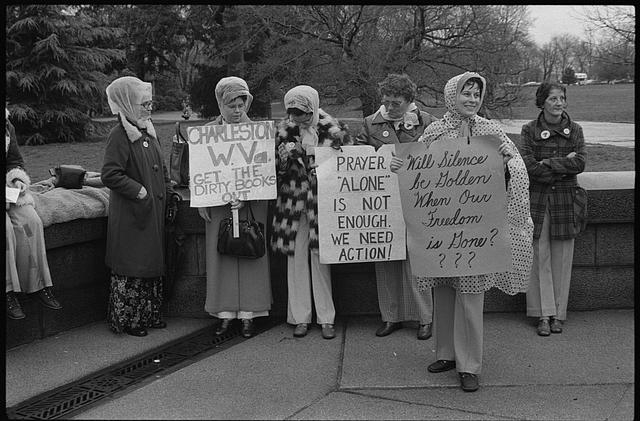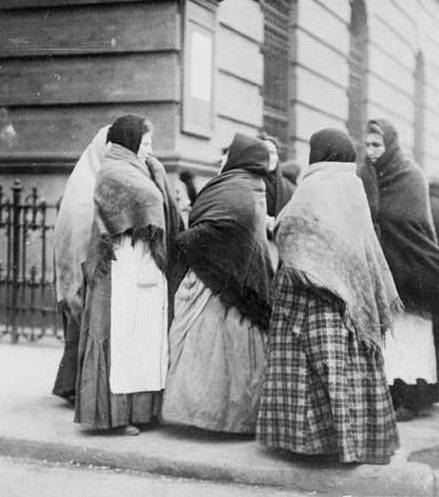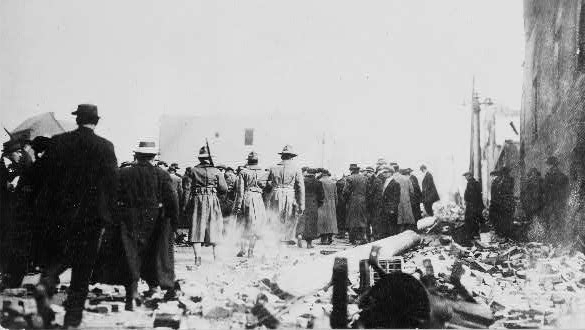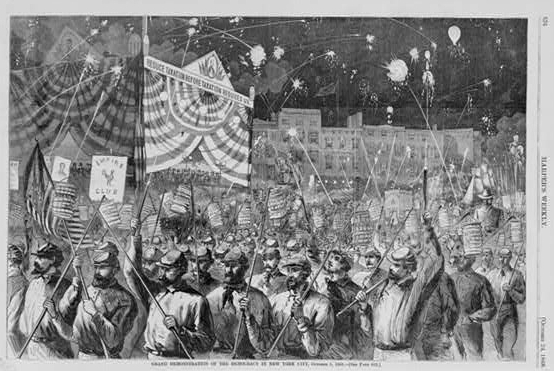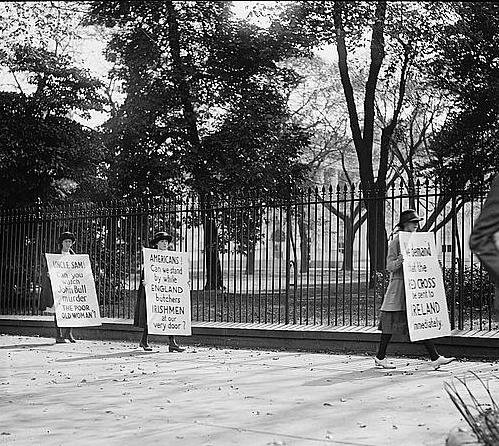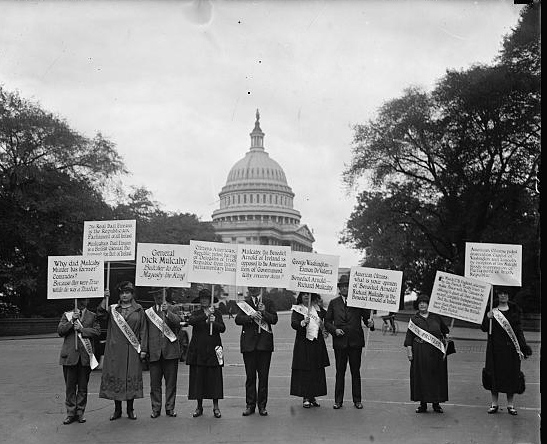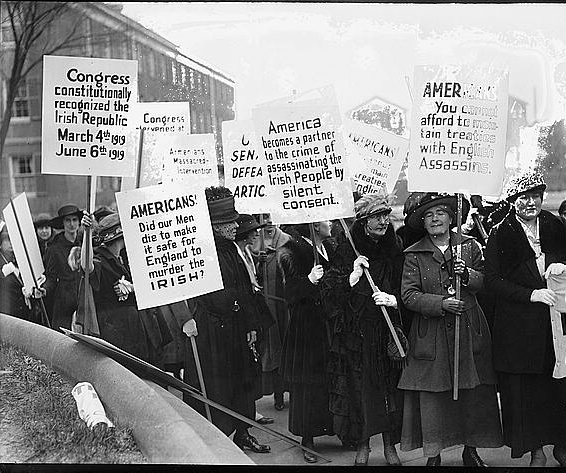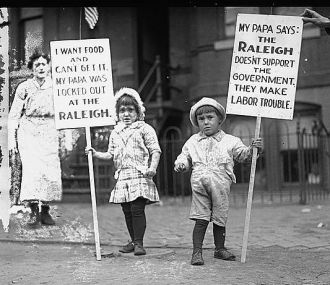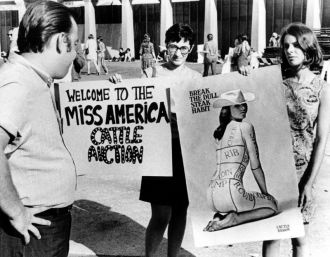
How May Day used to be celebrated
 AncientFaces
AncientFaces A 1939 photo in Georgia of the May Queen and her court dancing around a Maypole.
Silent protest parade
 AncientFaces
AncientFaces In Spring of 1917, during World War I, a labor and race riot broke out in East St. Louis, Illinois. 3,000 white men had marched downtown and began attacking African Americans. Estimates vary widely but it is believed that around 100 blacks were killed. This silent march in New York City involved 10,000 people.
Protesting the high cost of food
 AncientFaces
AncientFaces 1917 New York.
Sending the kids out to picket
 AncientFaces
AncientFaces 1919, Washington D.C.
Rally of the unemployed
 AncientFaces
AncientFaces 1909 New York.
Protesting for better wages and hours . . .
 AncientFaces
AncientFaces And against police brutality.
Vigilantes hired for railroad strike control
 AncientFaces
AncientFaces 1916 Ohio.
Vietnam war protest
 AncientFaces
AncientFaces Also supporting Eartha Kitt, 1968.
Stop ERA demonstration
 AncientFaces
AncientFaces 1977 protest against the Equal Rights Amendment (which would have created equal rights for women).
Oh, the smell!
 AncientFaces
AncientFaces Garbage strike, 1911 NYC.
 AncientFaces
AncientFaces Phew!
Mill worker's strike, 1912
 AncientFaces
AncientFaces Notice the children (who were workers).
Protesting political prisoners
 AncientFaces
AncientFaces British citizens were prisoners in the U.S. in 1922 due to the Irish uprising.
Police arresting protester
 AncientFaces
AncientFaces Newspaper strike, 1910 NY.
Single women protest for jobs
 AncientFaces
AncientFaces 1933 New York.
Celebrating women getting the vote 1920
 AncientFaces
AncientFaces Bomb victims - Anarchist riot
 AncientFaces
AncientFaces 1908 New York City.
1912 strike
 AncientFaces
AncientFaces The threatening coal mine strike circa 1915
 AncientFaces
AncientFaces Coal mine strike, 1903
 AncientFaces
AncientFaces Strike Arbitration Commission
Impeach Nixon demonstration
 AncientFaces
AncientFaces 1973, Washington D.C.
Police shooting strikers
 AncientFaces
AncientFaces Engraving of 1886 railroad strike
Wilmington race riots 1968
1975 Protest against busing and textbooks
 AncientFaces
AncientFaces 1908 rent strike
 AncientFaces
AncientFaces Militia dispersing mobs
 AncientFaces
AncientFaces Railroad strike, 1916.
Democrat convention, 1868
 AncientFaces
AncientFaces Banner reads "reduce taxation before taxation reduces us".
Picketing British treatment of the Irish
 AncientFaces
AncientFaces Americans!
 AncientFaces
AncientFaces Did our men die to make it safe for England to murder the Irish?
But in the late 1800's, the character of celebrations began to change. It became a day for workers to march and advocate for worker's rights and in some countries such as the Soviet Union, a day to show off military might.May 1st is now celebrated in most countries around the world and is a day set aside to honor the laborers of the world.
The past few decades, May 1st has become a day to march and protest - often, the focus is on everything from immigrants' rights to LGBT awareness to police misconduct. Take a look at some of the protests from the past century and see if they appear any different from now.
Have photos that you'd like to see included? Share your photos or see photos of historic womens' protests on the next page.

